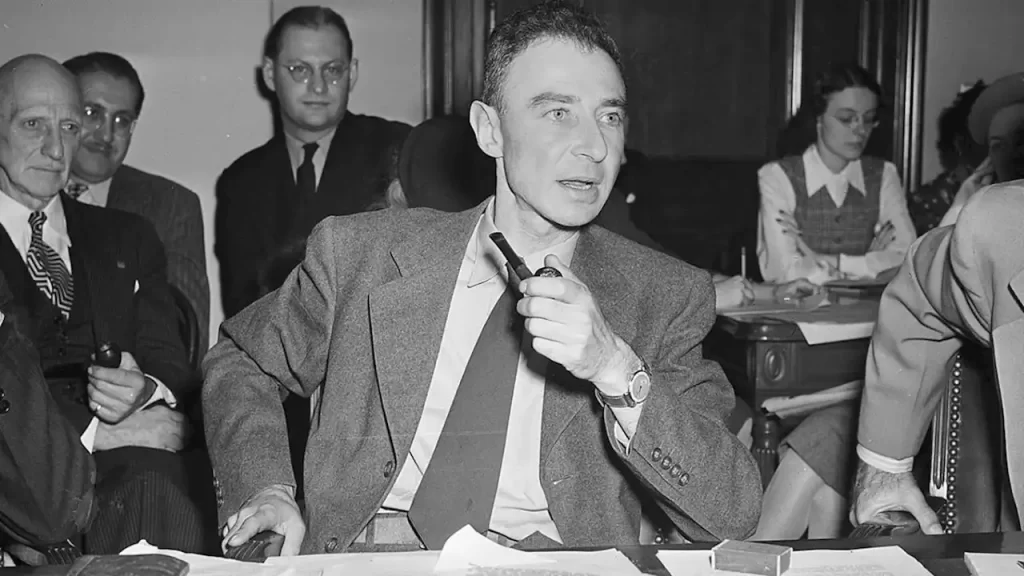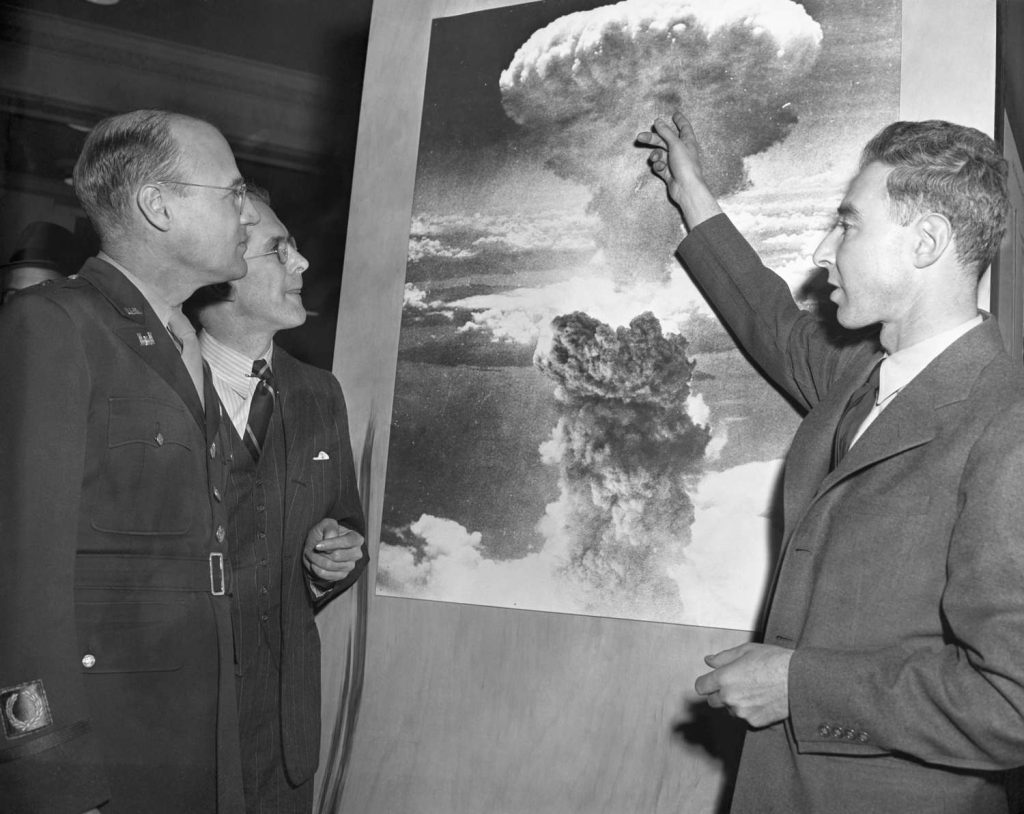If you are going to see the new Oppenheimer film this weekend, we’ve got you covered! How much do you know about the “father of the atomic bomb”?
The theoretical physicist was best known for his instrumental role in the development of the atomic bomb, directing the Manhattan Project’s Los Alamos Laboratory. Here are 10 explosive facts that you should know before heading to the cinema on Friday!

1. He learnt Sanskrit to read Hindu scriptures
Did you know where Oppenheimer’s famous quote, “Now I am become Death, the destroyer of worlds,” came from? Hindu scripture!
Oppenheimer learnt ancient Sanskrit at Berkeley so that he could read the Hindu scripture, the Bhagavad Gita. He turned to the Gita for answers as he struggled with his conscience following the detonation of the atomic bombs. Historians have argued that reading the Gita shaped Oppenheimer, and he referenced its philosophy frequently in his day-to-day life.
2. He was opposed to the production of the Hydrogen Bomb
Surprisingly, Oppenheimer spent most of his career after WWII campaigning for international regulations on nuclear weapons.
When the USSR made headway with their own atomic bomb, Oppenheimer wanted to steer nuclear technology away from bombs. He instead urged for its development for things like generating power. The Atomic Energy Committee (AEC) claimed Oppenheimer’s opposition to the Hydrogen Bomb had slowed the progress of Truman’s H-Bomb program. This placed Oppenheimer at the centre of the Red Scare, which eventually cost Oppenheimer his career.

3. He lost his security clearance during the Red Scare
The AEC, believing Oppenheimer to be a communist spy, revoked his security clearance in 1954 using a system that violated the Commission’s regulations. His opposition to the H-Bomb and his left-wing connections put him under suspicion from the likes of Joseph McCarthy. Fearing a McCarthyist attack, Eisenhower subsequently launched a security hearing by the AEC into Oppenheimer. The results of this hearing were made public and concluded that, while he was a loyal citizen, his behaviour reflected a disregard for security. After this incident, his government work ended.
4. His brother, wife, and girlfriend were all members of the Communist Party
Oppenheimer’s brother, Frank Oppenheimer, admitted to having been a member of the Communist Party of the USA in 1949, a revelation that contradicted his previous denials. Oppenheimer’s wife, Kitty, had previously been married to a communist activist. He also had an affair with Jean Tatlock, a member of the Communist Party. The romantic involvement between Oppenheimer and Tatlock served as fuel for the Atomic Energy Commission’s claims that he had become compromised and was potentially working as a Soviet spy. These accusations only intensified the ongoing scrutiny and suspicion surrounding Oppenheimer’s loyalties.
5. The FBI monitored everything Oppenheimer did, apart from the conversations within his own home
The FBI decided to turn up the heat on Oppenheimer in 1941 due to his left-wing connections, monitoring his every move. This surveillance escalated to a point where the only privacy afforded to him were the conversations within his own home. The FBI justified this invasion of his privacy by stating that they needed to know of any indication that Oppenheimer might flee the country.
6. He was a child prodigy
Oppenheimer, after using his family typewriter to correspond with local geologists, was invited to give a lecture on geology at the New York Mineralogical Club, who were unaware that he was only 12 at the time. His father, entertained and amused by the idea, encouraged him to accept the invitation. The young Oppenheimer received a bewildered but impressed round of applause for his shy geological remarks!

7. He was the first to prove the existence of Black Holes
On September 1st, 1939, Oppenheimer and his student Hartland Snyder published a paper in the journal Physical Review, outlining the key foundations of black holes. This was the only time in which Oppenheimer worked on black holes, but this brief research is often considered to be his greatest contribution to physics. So why did he not pursue this groundbreaking experiment into black holes? Well, supposedly, it was because he just wasn’t interested. The creator of the modern concept of black holes didn’t think they were that important!
8. His love life was a disaster
Oppenheimer was quite the Casanova. He married Kitty Harrison in 1940, but the two met and got together at the party of a fellow scientist while Kitty was still married. Oppenheimer had multiple affairs after having two children with Kitty, not only with Jean Tatlock but also with Ruth Sherman Tolman, a psychologist who was married to a good friend of Oppenheimer. Her husband died of a heart attack in 1948, but many contend he died of a broken heart.
9. President Truman kicked him out of the Oval Office
After struggling with the weight of the responsibility of the Hiroshima and Nagasaki atomic bombs, Oppenheimer went to the Oval Office to lobby President Truman for tighter regulations on atomic weapons. He told Truman that he had “blood on his hands”. Truman apparently responded “the blood is on my hands, let me worry about that”, before kicking him out of the office and telling him to never come back.
10. The Biden Administration repealed the decision to revoke Oppenheimer’s security clearance in 2022, 55 years after his death
The Department of Energy revoked its decision to strip Oppenheimer of his security clearance after years of lobbying from the scientific community to reinstate his reputation. It has since been recognised that the investigation that irreversibly damaged his career was biased and unfair, and Oppenheimer’s loyalty has been emphasised. The Biden Administration has decided to repeal the decision as an attempt to correct the historical record and to recognise the important contributions of Oppenheimer to physics and US national defence.

There you have it! Head over to our Instagram to learn about the history of Barbie and you’ll be all set for Barbenheimer this weekend.
To learn more, watch our video lesson on the Arms Race here:
